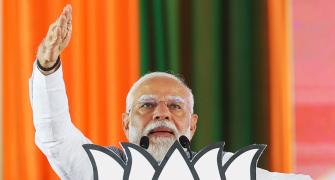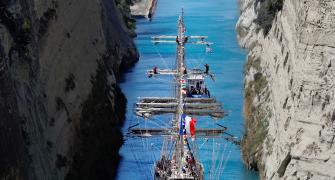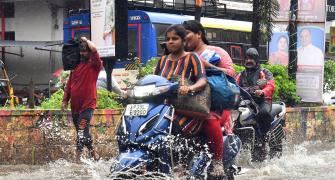Domestic passenger traffic soared by almost 40 per cent this year. This prompted nearly all the airlines to place orders for buying new aircraft, undeterred by the fact that they posted combined losses of about Rs 2,000 crore (Rs 20 billion) largely on account of rising fuel costs and payments of aircraft.
Indian carriers have inducted about 150 aircraft in the past two years, taking the total number of planes with them to more than 310. They will be adding close to 500 aircraft over the next few years to expand operations. The increase in the number of planes, coupled with more foreign flights, put immense pressure on the hard-pressed aviation infrastructure.
This forced the Civil Aviation Ministry to start working on a policy to encourage private or merchant airports, besides expediting airport modernisation works in Delhi, Mumbai and other major cities.
The Airports Authority of India also started work on 35 non-metro airports, and called for bids for developing the city-side of these airports. The government will also set up an Airport Economic Regulatory Authority to deal with the emerging scenario of private airport operators.
A major achievement this year was that no accident occurred, the best record in the past seven years. However, a number of 'air-miss' incidents were registered, including one involving a special aircraft carrying UPA chairperson Sonia Gandhi. But aviation authorities maintained that these were procedural failures and would never have caused an accident.
The year witnessed a smooth merger of two state-owned carriers -- Air India and Indian, despite strong protests from their employees. Private carrier Jet Airways completed its takeover of rival Air Sahara earlier in the year and made it a wholly-owned unit JetLite. Besides, liquor baron Vijay Mallya's UB Group bought 46 per cent stake in low-cost carrier Air Deccan that will be merged with Kingfisher Airlines.
A demand for relaxation of the existing norms to allow domestic carriers to undertake international flights was made by some airlines, notably Kingfisher. However, the government stuck to its position and did not change the norms that allow only those airlines which have flown on domestic routes for at least five years and have a 20-aircraft fleet.
Kingfisher now plans to operate on Air Deccan's rights from early next year when the low-cost carrier completes five years of domestic operations. However, the government decided to open up the Gulf route to eligible private carriers from January and Jet Airways was allowed to fly on this sector.
With the Indian aviation industry maturing, government proposed to liberalise the policy of foreign direct investment in the sector, particularly in areas such as creation of maintenance, repair and overhaul (MRO) facilities, sea-planes, charters, helicopters and other non-scheduled operations.
In light of significant planned expansion of India's fleet, several global players such as Airbus, Boeing, SIA Engineering, ST Aerospace and Lufthansa Technik are in the process of tying up to establish Maintenance, Repair and Overhaul (MRO) facilities in the country.
In a bid to beef up regional connectivity, the government announced a policy to promote scheduled regional airlines that would operate in the designated regions in the country.
A major initiative that would take the country's aviation sector to new heights and make India one among the four in the world was the successful testing of various aspects of the prestigious GAGAN project, a satellite-based navigation system that would manage air traffic even over oceans around India.
The government also focused on liberalising bilateral air traffic rights with several countries, taking the total seat entitlements up by 123 per cent between 2003 and 2006.
While traffic between India and Europe increased from 70 flights a week to 204 in the same period, Indo-US traffic rose from about 450,000 in 2003-04 to almost 900,000 in four years.
The government has also liberalised tourist charter norms by removing all restrictions on frequency, size of aircraft and points of call, subject to availability of immigration and customs facilities for inbound tour charters.
To meet the shortage of pilots, several steps were taken in recent months. These include raising the retirement age to 65 years and allowing expatriate pilots to operate in India, subject to approval by Directorate General of Civil Aviation.
The state-owned Indira Gandhi Rashtriya Udaan Academy tied up with a renowned pilot training firm CAE of Canada. A world-class flying school is being set up by the AAI at Gondia in Maharashtra and five foreign operators, including Airbus and Boeing, are evaluating investment opportunities.
The government has also enhanced DGCA's powers after amending the Aircraft Act, which would empower the regulatory body to license air traffic controllers.
The year 2007 can be called a mixed bag for the Indian aviation with a number of good initiatives that propelled the sector although airlines struggled to maintain profitability. Fierce competition, high jet fuel costs and infrastructure bottlenecks could, however, play spoilsport in the New Year.







